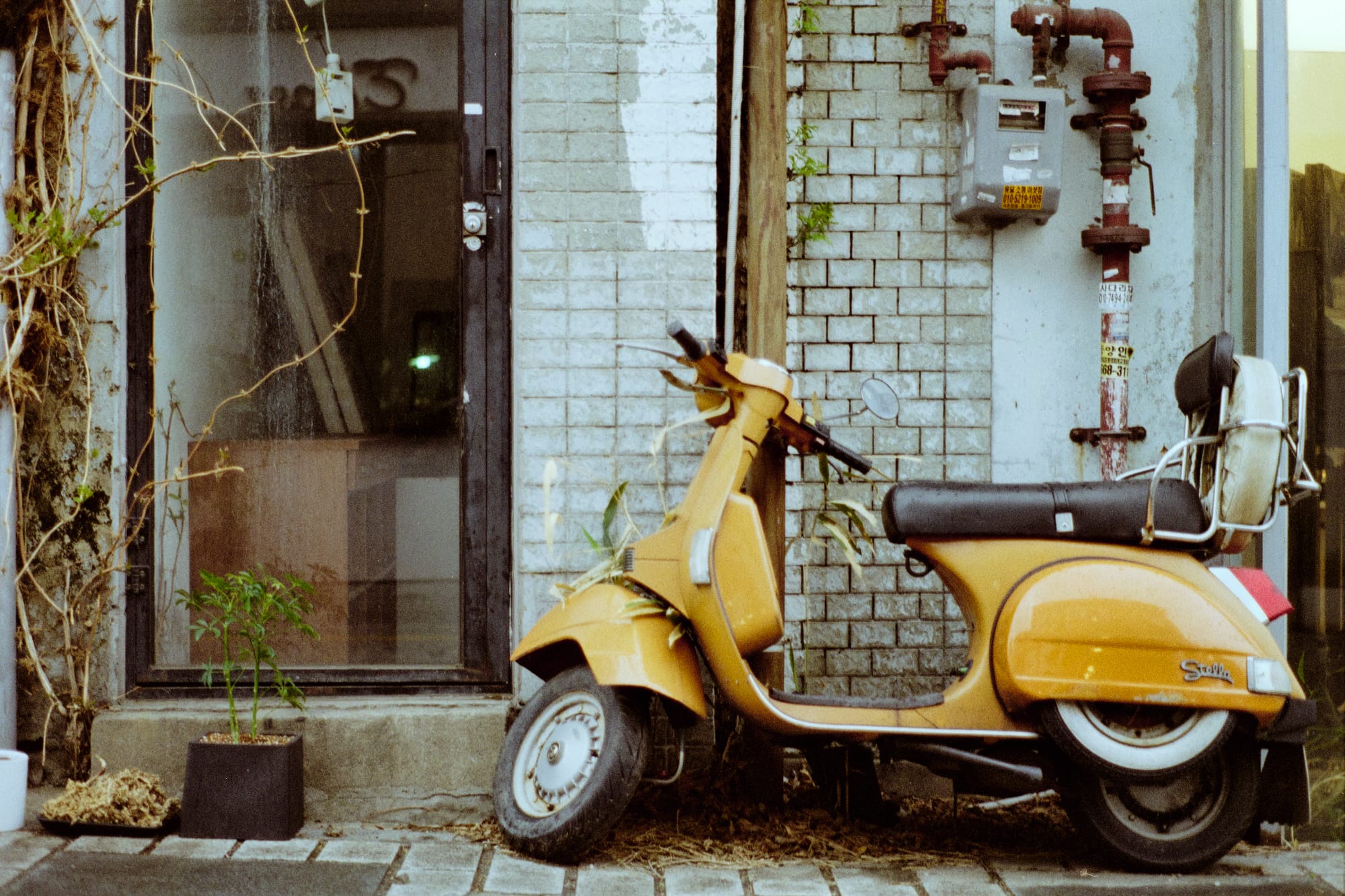Industar-50 (on Fujifilm X-Pro3) Review - The Joy of Flawed Lenses
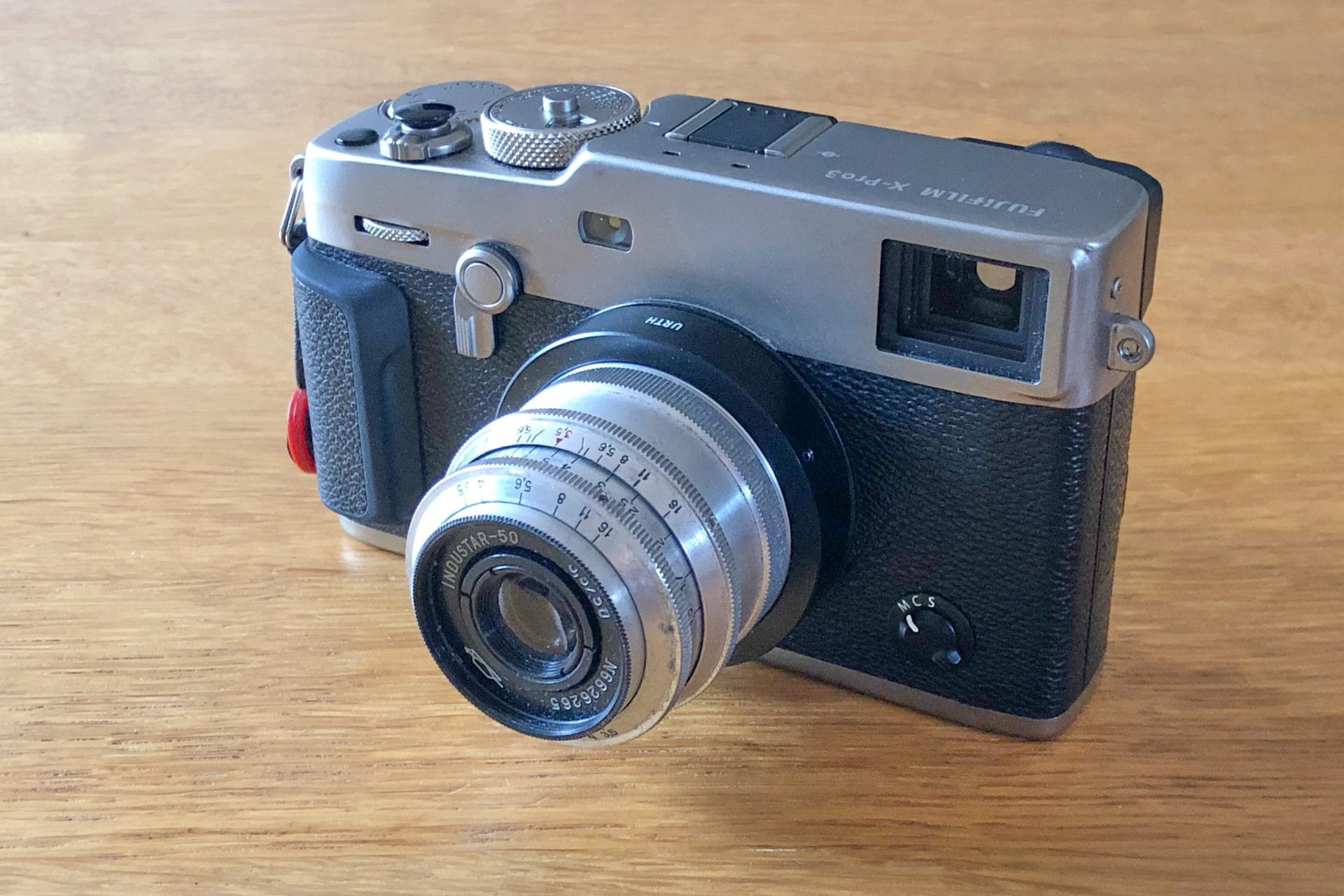
[Originally published on 35mmc.]
I had the good fortune to be wandering the Kazimerz neighborhood of Krakow, Poland, on a Saturday morning, where I stumbled upon a small but very interesting flea market. An American child of the 80s, I’ve always been fascinated with Soviet artifacts, and their cameras in particular. So this flea market was like catnip to me. (Sadly, I missed the much larger market on Sunday…next time!)
For sale were a selection of Soviet paraphernalia, some authentic, some clearly less so. And a fair few cameras, too: FED, Kiev, and Zorki rangefinders, all looking like they’d seen better days. Although I’ve had a Jupiter-9 for years, I’ve never actually owned a Soviet rangefinder before, so not knowing much better I selected a Zorki-4 that appeared to be in the best shape of any of them. Attached was a grungy, sad-looking Industar-50 50mm f/3.5 lens, a lens (not knowing any better) that I hastily disregarded as the least interesting part of the package.
I paid my €50—probably far too much—, and took my camera home. That’s when I learned that the shutter mechanism on these old Zorkis has a quirk where if you select one of the slower shutter speeds before you cock the shutter, you can break the shutter mechanism. Needless to say, the 1/30s and slower shutter speeds are not operational, though the faster speeds work more or less just fine. One day I’ll throw more money at this camera.
So, camera clearly not in a state to work with, I started paying more attention to the lens. And I’m glad I did! It cleaned up nicely, and the focus and aperture mechanisms turned smoothly. It’s missing a screw, but it doesn’t seem to matter. The front and rear glass is finely etched with lifetime’s uncareful use, but are otherwise free of fungus and other problems. So I purchased an M39-FX adapter, and mounted the lens to my Fujifilm X-Pro3.
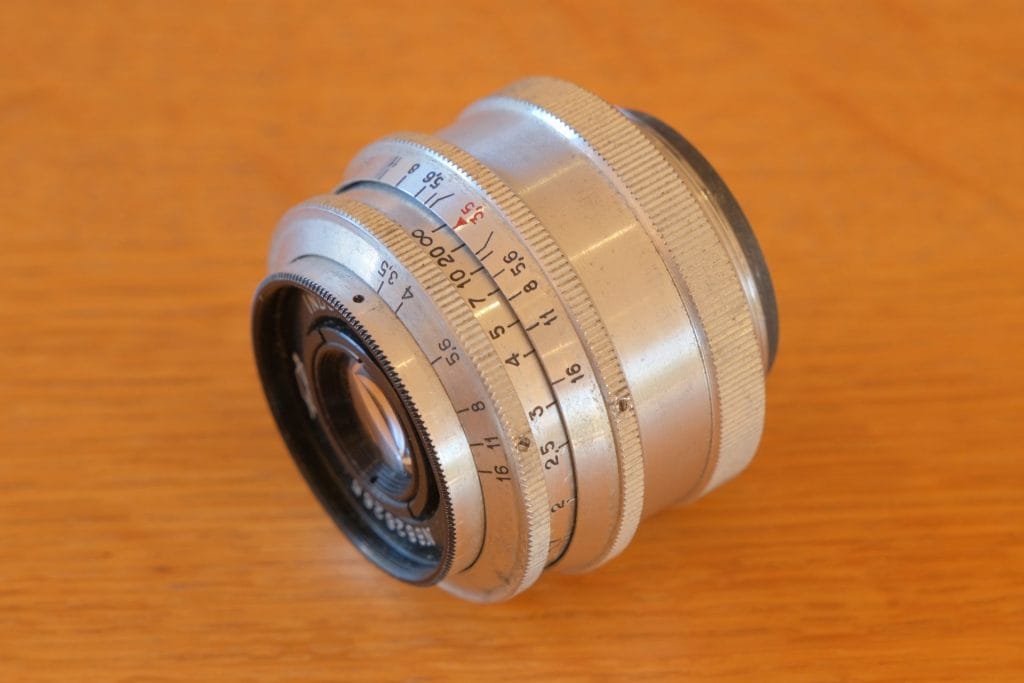
It’s stayed there more or less since.
A technical note for those keeping track: All the images shared here are straight out of camera (SOOC) JPEGs with the default Provia photo simulation—the most neutral. I would normally process these differently, but I wanted to emphasize the character of the Industar-50 over the processing capabilities of modern Fuji cameras.
Handling
Weight
As soon as you pick it up, you notice that this lens is like a feather.The lens itself is a mere 99g, with the adapter it becomes 142g. And the total weight of camera+adapter+lens (+handstrap) is 740g. It appears to be all-aluminum construction, and it’s weight barely registers once mounted to my camera.
Focus
The Industar-50 is a small lens—not the smallest Leica lens out there, but certainly smaller than the already diminutive Fuji FX 35/2. Even so, the focus ring falls mostly readily to hand. Sometimes I reach for the focus, and find it won’ t budge, however. This is because there are too many knurled metal rings—sometimes I mistake the focus ring for a vistigial ring whose purpose confounds me, because it doesn’t turn. I think this ring must be a relic of the fact that this lens is actually an M42-mount lens with an extension tube permanently attached. But mostly I can find the focus ring by feel. The focus throw is just over 180°, although from 5m to infinity is about 30°. I don’t actually know what that means to you, but for my purposes, I find that it’s quick to focus.
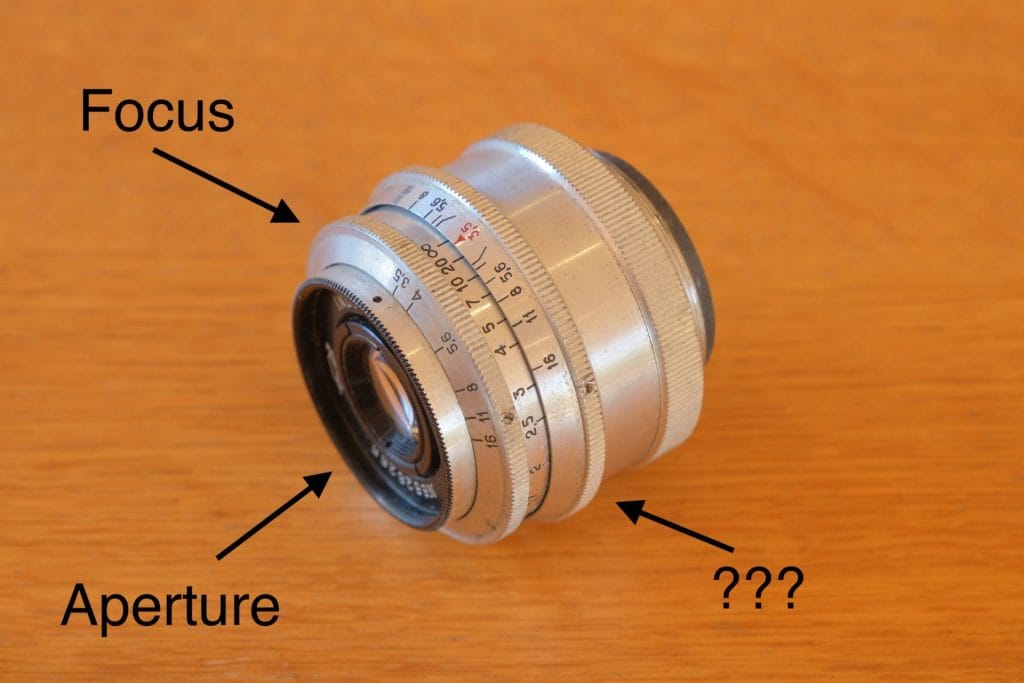
Aperture ring
The aperture ring on the Industar-50 is an awkward and sad appendage on the front of the lens that is difficult to use. Its placement is such that you have to take the camera away from your face to find it and turn it. Turning it also turns the focus, so if you’ve already set focus, you have to hold the focus ring with a finger from one hand while adjusting the aperture with the other.
In use
All of which is to say I’ve found I’m better off using zone focusing techniques than trying to adjust aperture and focus on the fly. I’ve taken the time to carefully calibrate infinity focus with my M39 adapter, so most of the time I put the aperture at f/8, and preset the focus to 2m–20m, and the results usually turn out. The focus fall-off is smooth and gradual at f/8, so even if I miss focus a little bit, the Industar-50 is surprisingly forgiving (unlike some other lenses in my collection).
Filter ring
I have no idea what the filter ring size is, it’s not marked and the internet is frustratingly ambiguous. If someone knows, please share in the comments. It’s really small though, something in the vicinity of 30–35mm. It originally shipped with a slip-on cap—mine’s gone missing long before I bought it, so I’m unsure what they’re like, but I’m willing to bet they don’t stay on very well.
Image quality
To be honest, I wasn’t expecting much from the Industar-50. So saying it exceeded my expectations might be damning with faint praise. Even so, I like the results. Now, the X-Pro3’s APS-C sensor is getting the best parts of the lens; I’m unsure how the lens will perform on a full-frame camera. As I mentioned earlier, all the images in this post were taken on my Fuji X-Pro3, with the Provia profile applied to help show the color rendering of the lens.
Sharpness
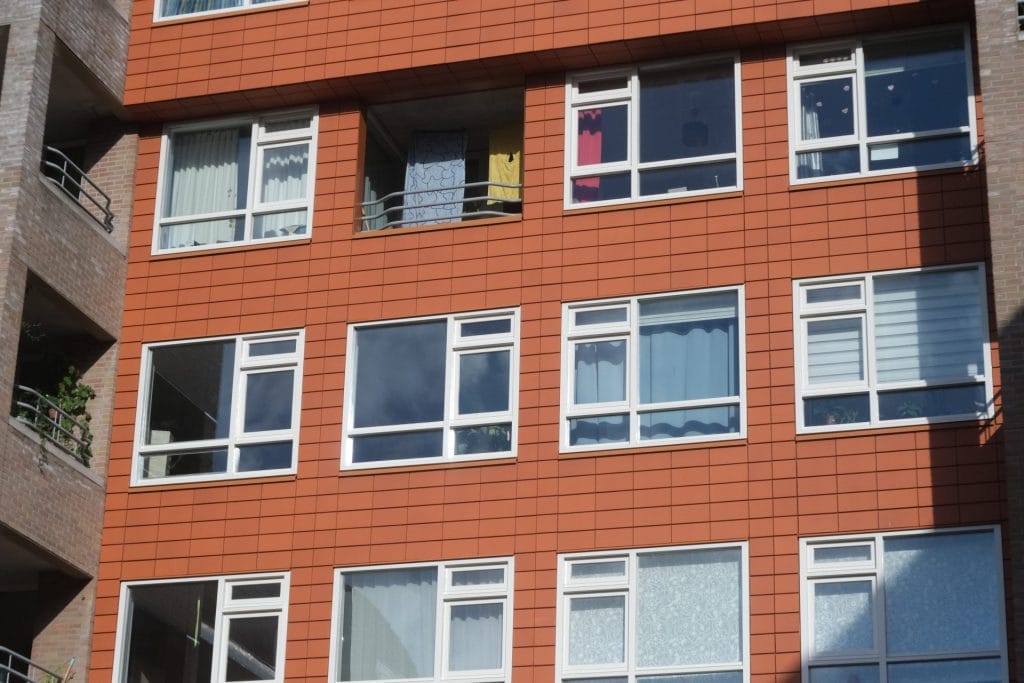
Sharpness is about what you’d expect: Sharp enough in the center wide open, with the sharpness expanding to the edges (but never quite reaching them) as you stop down. There is some vignetting wide open.
Lens flares

The Industar-50 flares if you think about using it near a bright light. And not pretty flares, either, but a veritable rainbow of light sprayed across the image. Into the light, you quickly lose contrast. Of course, mine didn’t come with a lens hood, and the small filter ring makes me despair to find one. It’s also hard to say how much of this effect is due to this lenses less-than-pristine state.
Distortion and aberration
The Industar-50 shows absolutely no sign of distortion. I live in a city made entirely of brick buildings, and I have taken some shots of brick walls to check. I’m not sharing them here because they are boring—and perfectly rectilinear.
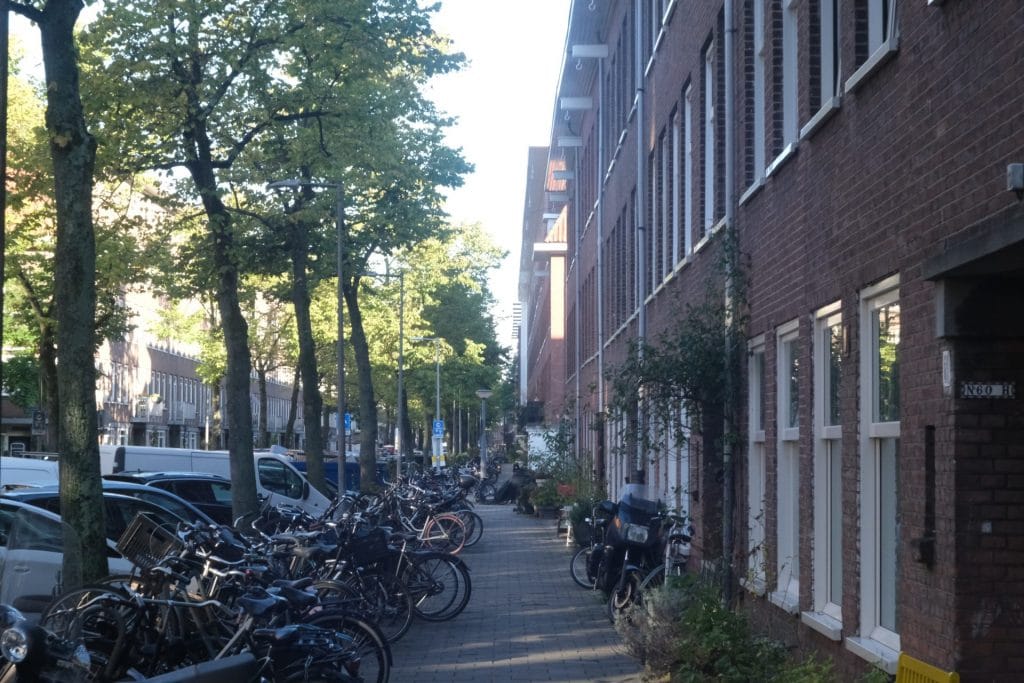
Something that was surprising to me was the absolute lack of chromatic aberration. I try, and I simply cannot get the Industar-50 to create colorful fringes.
Color and rendering
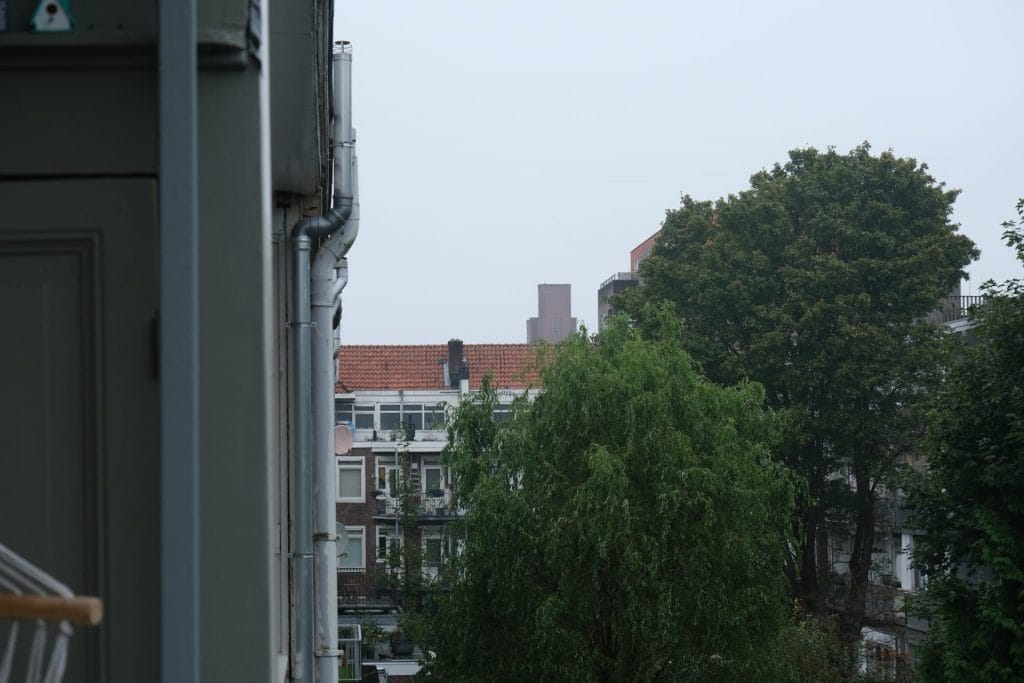

The colors are just a bit muted, but to be honest Amsterdam is not exactly a colorful city, so it can be hard to know when a lens’s color is muted, versus the scene simply being drab. There doesn’t appear to be any color cast. The more I use the lens, the more I think that its color rendering is reasonably true to life. Above are two photos of the same scene, one taken with the Industar-50, and one with a Fuji lens to give you a comparison.
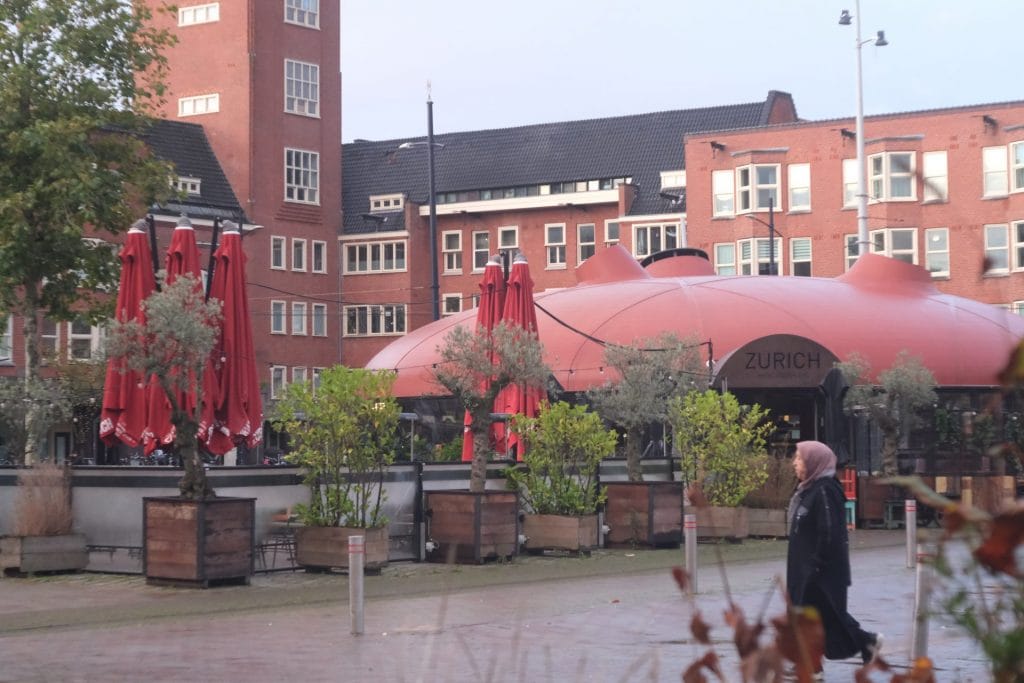
The contrast is a little low, and there is very little microcontrast—subtle details tend to get smoothed out a bit. There’s also a strong glow in many scenes, as you can see. But to be honest I don’t know if these effects are an intrinsic feature of the Industar-50, or the result of the fact that my lens shows a lot of, uh, “cleaning marks”. Either way, I like it.
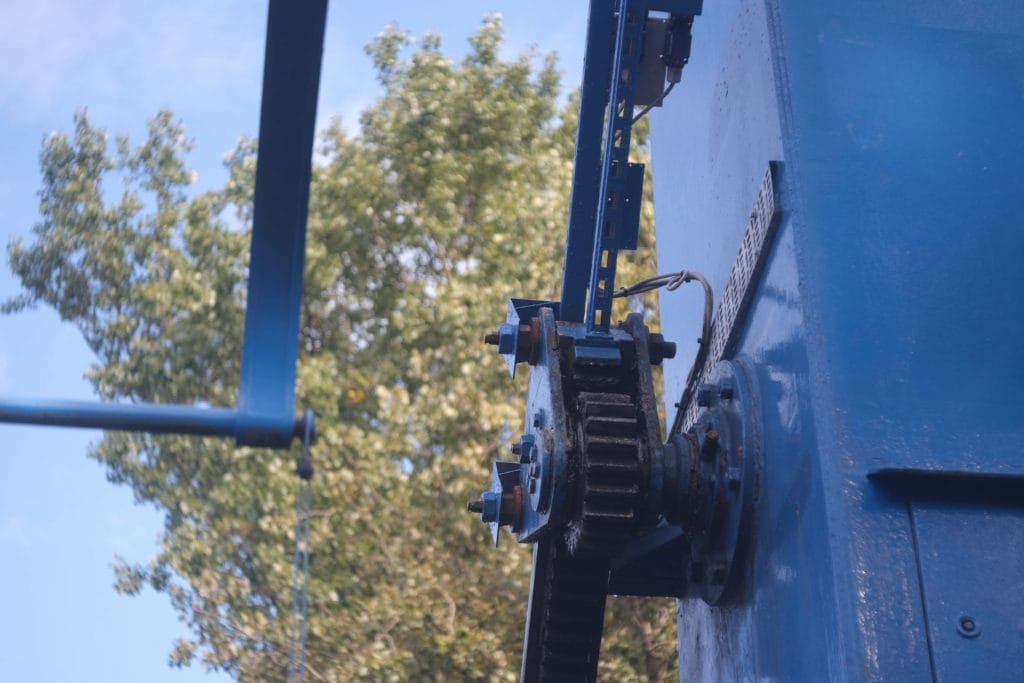
With a maximum aperture of f/3.5, you’re not going to be taking shots with a lot of bokeh. I certainly haven’t yet. But what bokeh there is has the kind of swirly feel that makes you faintly dizzy to look at.
On flawed lenses
Sounds awful, doesn’t it? Funny thing is, I really like the Industar-50. I didn’t expect to. I thought I liked the kind of razor sharpness and microcontrast that could kill a man. But I’ve had a few experiences lately that have changed my mind. This lens is one of them.
There is a piece of advice I often see on the internet: Use the sharpest lens, and the highest resolution sensor/finest-grain film, and you can add whatever “vintage” effects you like in post. This might be true, but it also depends upon your skill level and willingness to pour lots of time into learning and using post-production software.
By the same logic, we could all be shooting color film, and converting to black and white in post. It’s true, we could.
Better if we have a vision for our final product in mind, and reach for the tools that allow us to achieve that vision with the least amount of effort.
And, honestly, I would far rather be out in the world taking pictures than hunkered over my computer trying to get all the sliders just so. I am finding more and more that vintage lenses—and even damaged lenses—are a delightful mechanism for getting the vintage look, which is something I’m chasing.
So, in that vein, the Industar-50 has character to spare. It’s usable (just), it’s small, it’s plentiful, and cheap.
More images
I’ve been engaged in a lengthy project of documenting my neighborhood in Amsterdam. It’s quite out of the way, not on the tourist highlights, but I rather like it. Built in the 1920s, it’s a key exemplar of the Amsterdam School of architectural design. Although many have seen photos of the old city, its lank and leaning warehouses-cum-flats, few have seen the bulk of the city which has its own vibe, a vibe I have come slowly over time to love.

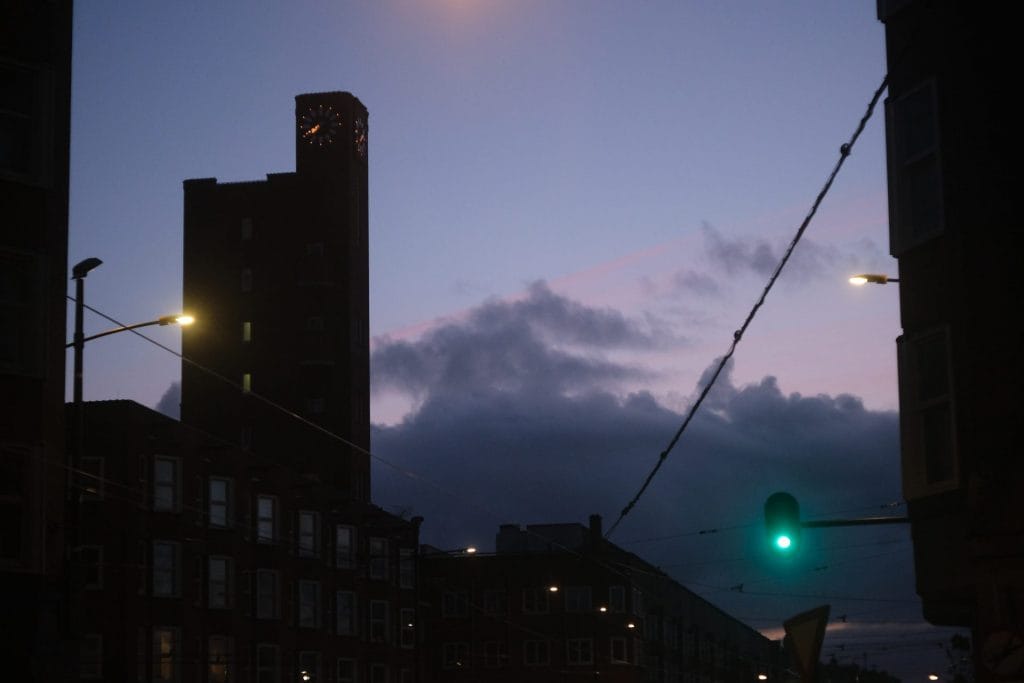
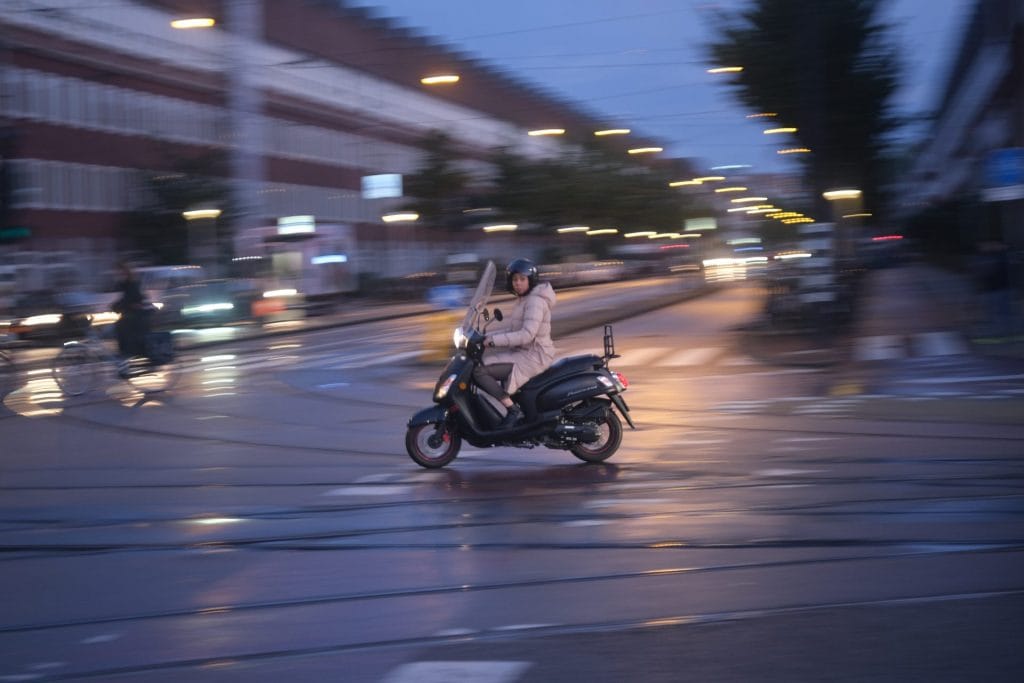
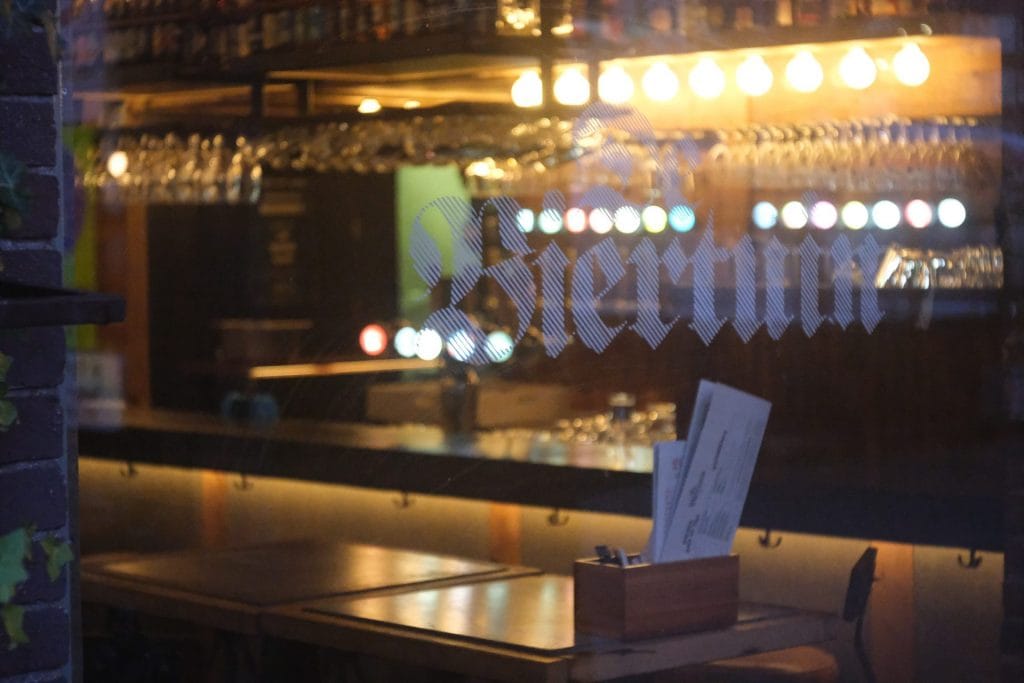
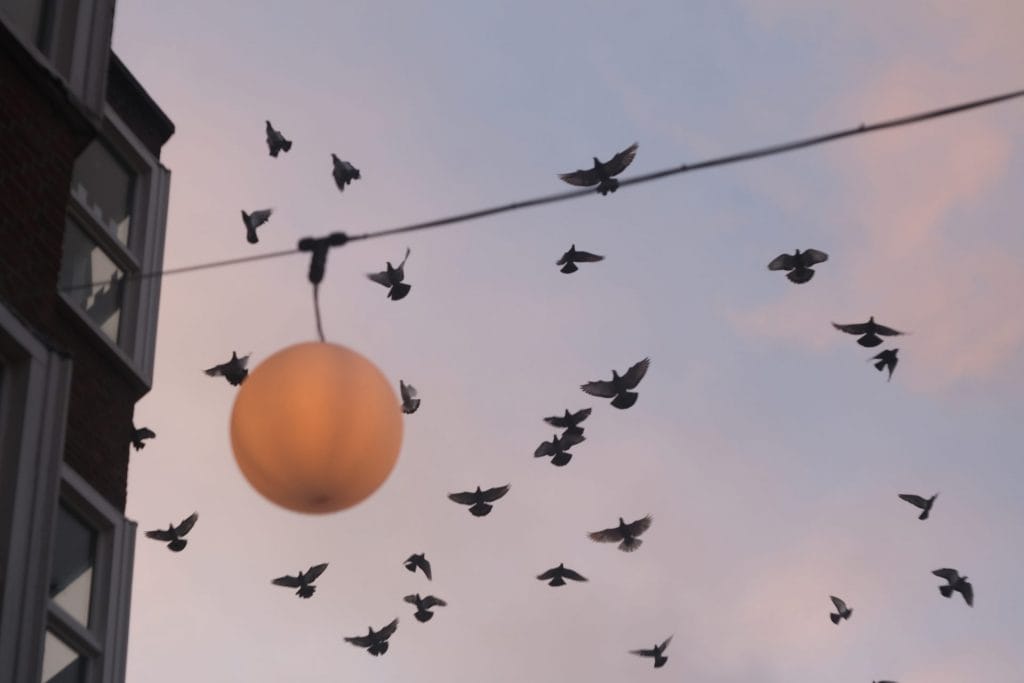

Support this blog
If you enjoy reading this blog, I encourage you to consider purchasing a book or print to show your support. And if you're into analog photography, check out my new mobile app Crown + Flint.
